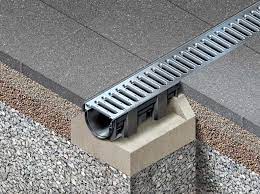How to Properly Deal With Storm Water Drainage Systems
A storm drain, storm water drain, groundwater drain/ sewer, or surface water pipe is infrastructure designed in an area to transport excess rainfall and/or ground water away from impervious surfaces like parking lots, commercial streets, car lots, sidewalks, roofs, and patios. Storm drains, which are normally located at the lowest level of a built up region, carry run off from rainfall and other runoff and channel the water away from the home. Sewer drainage systems channel the water away from sewer lines and pipes. Drain pipes can be installed either inside the home or outside the home depending on the location. In addition, some drains have an underground storage tank that stores water for use by the public in times of an emergency.
Storm drainage does not only help keep you and your family dry, but it also protects the safety of those who live or work nearby. For example, if a flood were to occur and clean up and drying out a parking lot, the water that was able to get through would probably end up filling up the parking lot along with all of the things stored inside. Also, if the storm system is not working properly then there is a chance that someone could get hurt. Heavy rains and even a small amount of snow can fill our drainage systems with gallons and even inches of water, so the importance of storm drain maintenance cannot be overemphasized.

There are many reasons that your storm water drainage system could become clogged. Tree roots are one major reason why drains become clogged, so it is important to make sure that they are planted very carefully to avoid clogs. Another reason why drains become clogged is because of birds and other types of insects that find their way into a storm drain and begin washing dirt and debris into it. It is important to make sure that you empty your storm water drainage system every few weeks so that these unwanted visitors do not build a resistance to the drainage and clog it completely.
If you live in an area that has a lot of rain or rainfall each year then there is a chance that there is another cause for your water drainage problem besides just tree roots and other forms of insects. One cause that is quite common is an underground pipe that is leaking. Many times this underground pipe will actually get deeper into the ground and can actually reach your house. Sometimes this can be as a result of a leaky pipe that was previously installed. If you find any evidence of a pipe leakage on your property you should immediately contact a local plumbing company to determine the cause of the leaky pipe and to fix it.
Another problem that can come from your storm water drainage system is if there is a tree root intrusion or a tree root clog. In some cases you may find that a tree root can get underneath the pipes that are supplying your household’s water supply. This can make it very difficult for the water to be able to move out and away from your house. The only way to effectively address this problem is to have a plumber remove the tree roots from underneath your underground pipes. After they have been removed the pipes can be refilled with new ones.
Although you can use organic mulches in most places you should still hire a professional to inspect your storm water drainage systems for any visible damage. One good sign of damage would be holes in the ground that are larger than three-eightths of an inch. These kinds of holes are good candidates for seepage. Other signs of damage include cracked and broken pipes and bulging drains. In some cases if you find older homes where the storm water drainage systems were put in place many years ago, you might find that some of the pipes have been blocked.



